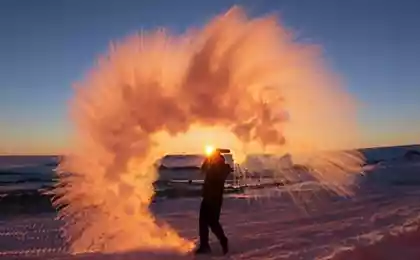812
Most astronomical photos 2015
Highlights and vspyshkiGrinvichskaya Observatory (UK) presented a short list of the best shots of the contest Insight Astronomy Photographer of the Year. The contest is held for the seventh time this year it was attended by a record number of photographers: 2700 images from 60 countries. The winners were selected in eight categories ("Aurora", "Sun", "Stars and nebulae," "Man and Space" and so on).
Accession angelov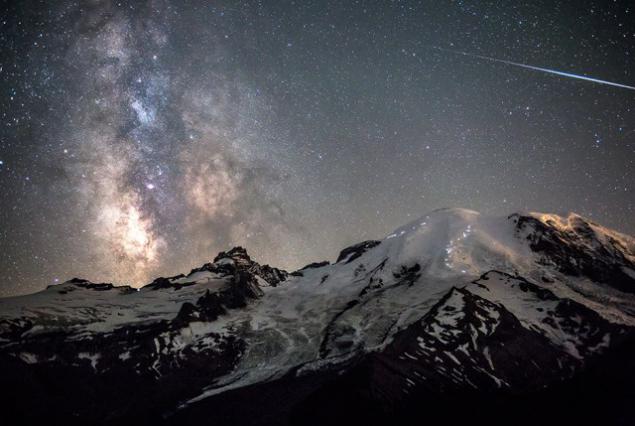
Run away from a black bear, American photographer climbed to the top of the mountain and took this picture. The sky visible stars of the Milky Way and a bright meteor trail. White lights on the mountainside (stratovolcano Mount Rainier, Washington) - a flashlight climbers.
Northern Lights (panorama) 97,691,890
Green lights of the northern lights dancing in the sky over a fjord Lyngen (Troms, Norway), indicating the shape of the Earth's magnetic field over the waters of the Norwegian Sea. Characteristic of such phenomena green color is due to the interaction of particles in the upper atmosphere from the solar wind.
Comet C / 2014 Q2 (Lovejoy) 47,482,901
C / 2014 Q2 - it is the fifth comet discovered by Australian amateur astronomer Terry Lovejoy. In late 2014 and early 2015 it can be seen with binoculars (or even to the naked eye) in the Earth's sky. Blue-green comet associated with diatomic gas is burned as it is moving. Her tail is fragmented under the influence of the solar wind.
Calm before burey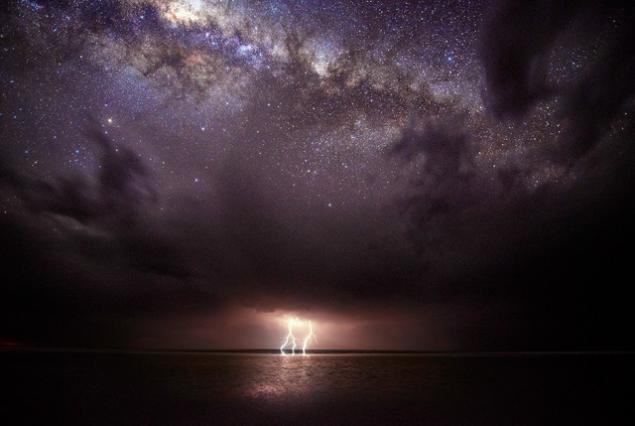
The rare spectacle of natural light show: the storm over the sea and the sparkling stars of the Milky Way. The picture was taken at Lake Eyre in South Australia. The photographer had to use gradient filters (and turn it upside down), to balance the extract in different parts of the image - so he was able to enhance the beauty of our galaxy.
Great Nebula This Kilya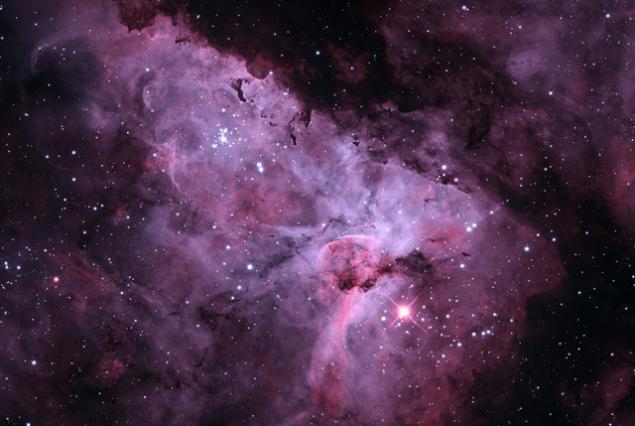
In the center of the nebula Eta Carinae, the clouds of dust and gas, is one of the biggest stars of the galaxy, also called Eta Carinae. It is about 100 times more massive and a million times brighter than the sun.
Full moon over Alpami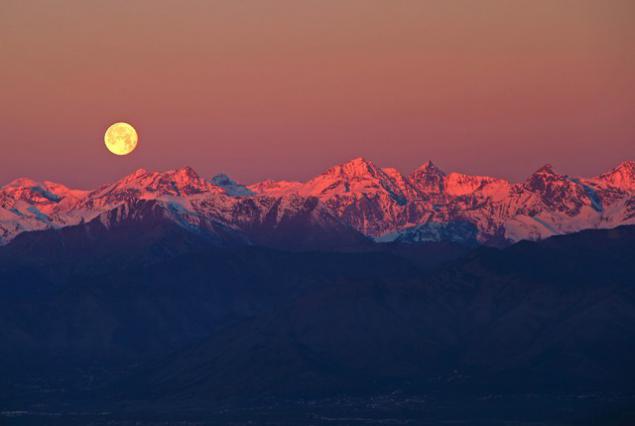
The picture was taken from the hill of Superga near Turin (Italy) a few minutes before sunrise.
Heart laguny
The Lagoon Nebula in the constellation Sagittarius was opened Sicilian astronomer Giovanni Hodierna no later than 1654. Although it is located at a distance of five thousand light-years from Earth, it is one of the few nebulae that you can see in the night sky with the naked eye (in the northern latitudes).
Moon and Antelao
Moon over the mountain Antelao (Dolomites, Italy). Snow-covered mountainside and the natural satellite of the Earth are very similar to each other, especially on the background of bright blue midday sky. Photographer compared the objects on your image with the snowball rolling down the hill.
IC443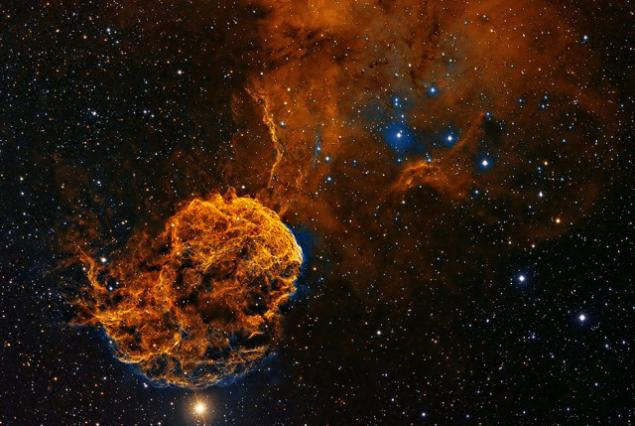
IC443, or the Jellyfish Nebula in the constellation of Gemini - a remnant of a supernova that exploded relatively recently, from 30 to 3,000 years ago.
Star sledy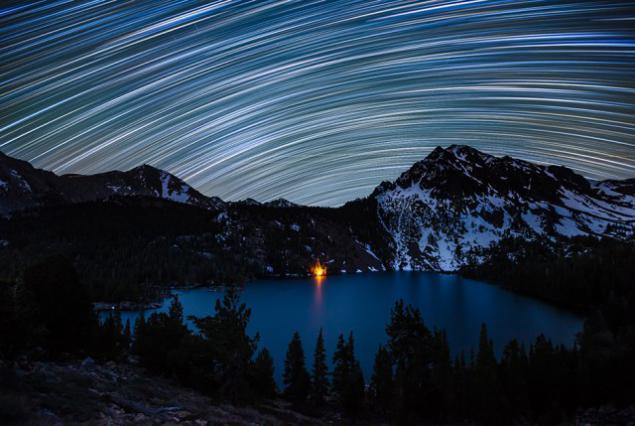
Star tracks above the lake Green (California). These objects are very fond of Astro: they are obtained through prolonged exposure and the Earth's rotation around its axis.
Nebula Oriona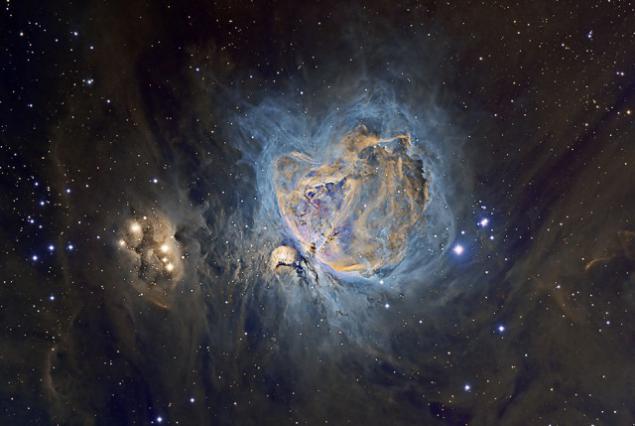
Orion Nebula - one of the most famous and visible in the sky of the earth deep-sky objects. It is located in the Orion cloud, along with other pets astrophotographers: Horsehead Nebula, and Barnard's Loop nebula Running Man (the left side of the picture). Pink and orange hues in curls creates a hot hydrogen nebula.
Hill Motind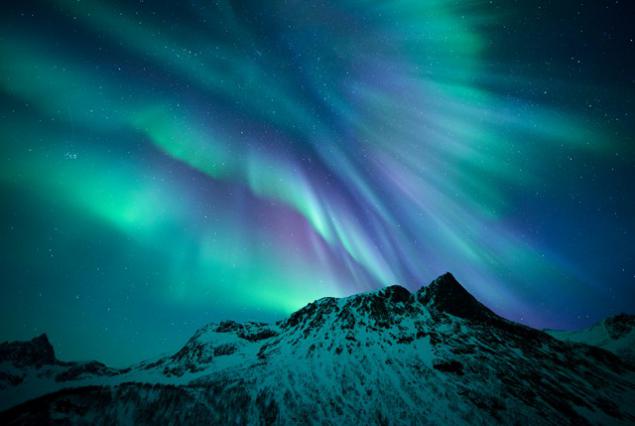
Motind © Rune Engebo Hill Motind Norwegian photographer for their lives must have seen a lot of auroras, but 21 January 2015 his eyes opened unprecedented riot of colors. The oxygen atoms of the peaks of the island of Senja have given the green shades, and nitrogen - purple.
Rozetka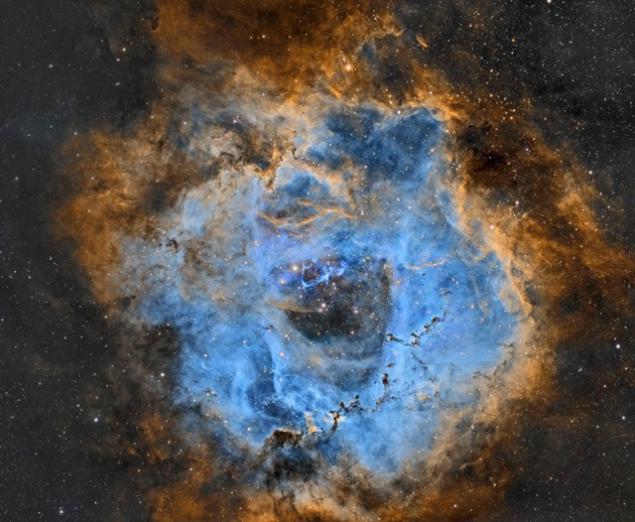
Rounded Rosette Nebula is located at the edge of a molecular cloud in the constellation Monoceros. Hot young stars in the center of the nebula surrounding them heated gas to approximately six million degrees Kelvin, which gave a powerful X-ray radiation. Photographer missed shots through narrow band filters that give the output bright blue and orange colors.
Protuberanets
Reflected nebo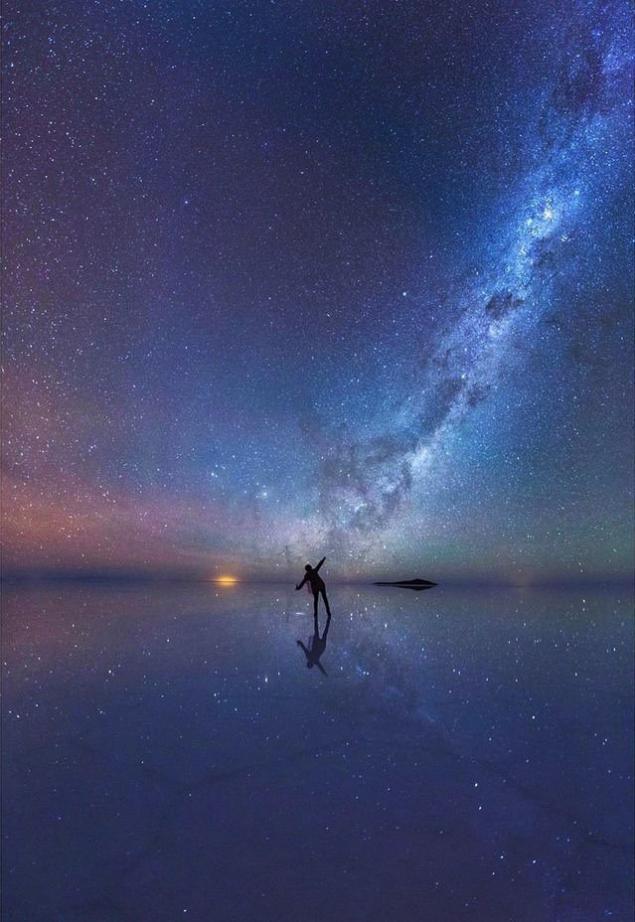
Fascinated by amateur astronomer that "bathes" in the stars, when the night sky is reflected on a thin layer of water covering the Uyuni (Bolivia) - the largest salt marsh in the world.
Northern Edge siyaniya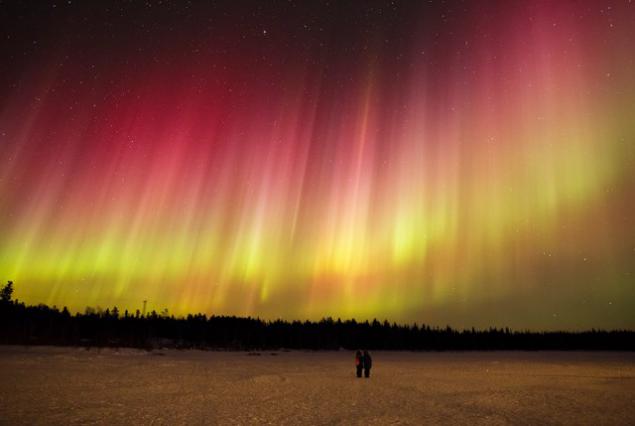
A rare sight - the aurora red, caused by the ionization of oxygen. The picture was taken near Yellowknife (Canada).
Helmet Tora
For its shape nebula NGC 2359 has received the name of Thor Helmet. The unusual shape of it is bound to the star Wolf-Rayet (hot giant on the verge of becoming a supernova), the wind that blows from the interstellar matter.
via lenta.ru/photo/2015/07/11/astrophotos/#0
Accession angelov

Run away from a black bear, American photographer climbed to the top of the mountain and took this picture. The sky visible stars of the Milky Way and a bright meteor trail. White lights on the mountainside (stratovolcano Mount Rainier, Washington) - a flashlight climbers.
Northern Lights (panorama) 97,691,890
Green lights of the northern lights dancing in the sky over a fjord Lyngen (Troms, Norway), indicating the shape of the Earth's magnetic field over the waters of the Norwegian Sea. Characteristic of such phenomena green color is due to the interaction of particles in the upper atmosphere from the solar wind.
Comet C / 2014 Q2 (Lovejoy) 47,482,901
C / 2014 Q2 - it is the fifth comet discovered by Australian amateur astronomer Terry Lovejoy. In late 2014 and early 2015 it can be seen with binoculars (or even to the naked eye) in the Earth's sky. Blue-green comet associated with diatomic gas is burned as it is moving. Her tail is fragmented under the influence of the solar wind.
Calm before burey

The rare spectacle of natural light show: the storm over the sea and the sparkling stars of the Milky Way. The picture was taken at Lake Eyre in South Australia. The photographer had to use gradient filters (and turn it upside down), to balance the extract in different parts of the image - so he was able to enhance the beauty of our galaxy.
Great Nebula This Kilya

In the center of the nebula Eta Carinae, the clouds of dust and gas, is one of the biggest stars of the galaxy, also called Eta Carinae. It is about 100 times more massive and a million times brighter than the sun.
Full moon over Alpami

The picture was taken from the hill of Superga near Turin (Italy) a few minutes before sunrise.
Heart laguny

The Lagoon Nebula in the constellation Sagittarius was opened Sicilian astronomer Giovanni Hodierna no later than 1654. Although it is located at a distance of five thousand light-years from Earth, it is one of the few nebulae that you can see in the night sky with the naked eye (in the northern latitudes).
Moon and Antelao

Moon over the mountain Antelao (Dolomites, Italy). Snow-covered mountainside and the natural satellite of the Earth are very similar to each other, especially on the background of bright blue midday sky. Photographer compared the objects on your image with the snowball rolling down the hill.
IC443

IC443, or the Jellyfish Nebula in the constellation of Gemini - a remnant of a supernova that exploded relatively recently, from 30 to 3,000 years ago.
Star sledy

Star tracks above the lake Green (California). These objects are very fond of Astro: they are obtained through prolonged exposure and the Earth's rotation around its axis.
Nebula Oriona

Orion Nebula - one of the most famous and visible in the sky of the earth deep-sky objects. It is located in the Orion cloud, along with other pets astrophotographers: Horsehead Nebula, and Barnard's Loop nebula Running Man (the left side of the picture). Pink and orange hues in curls creates a hot hydrogen nebula.
Hill Motind

Motind © Rune Engebo Hill Motind Norwegian photographer for their lives must have seen a lot of auroras, but 21 January 2015 his eyes opened unprecedented riot of colors. The oxygen atoms of the peaks of the island of Senja have given the green shades, and nitrogen - purple.
Rozetka

Rounded Rosette Nebula is located at the edge of a molecular cloud in the constellation Monoceros. Hot young stars in the center of the nebula surrounding them heated gas to approximately six million degrees Kelvin, which gave a powerful X-ray radiation. Photographer missed shots through narrow band filters that give the output bright blue and orange colors.
Protuberanets

Reflected nebo

Fascinated by amateur astronomer that "bathes" in the stars, when the night sky is reflected on a thin layer of water covering the Uyuni (Bolivia) - the largest salt marsh in the world.
Northern Edge siyaniya

A rare sight - the aurora red, caused by the ionization of oxygen. The picture was taken near Yellowknife (Canada).
Helmet Tora

For its shape nebula NGC 2359 has received the name of Thor Helmet. The unusual shape of it is bound to the star Wolf-Rayet (hot giant on the verge of becoming a supernova), the wind that blows from the interstellar matter.
via lenta.ru/photo/2015/07/11/astrophotos/#0
"The inspiration was gone" 15 ways to get out of his stupor
Healthy food: the menu for the whole week


















